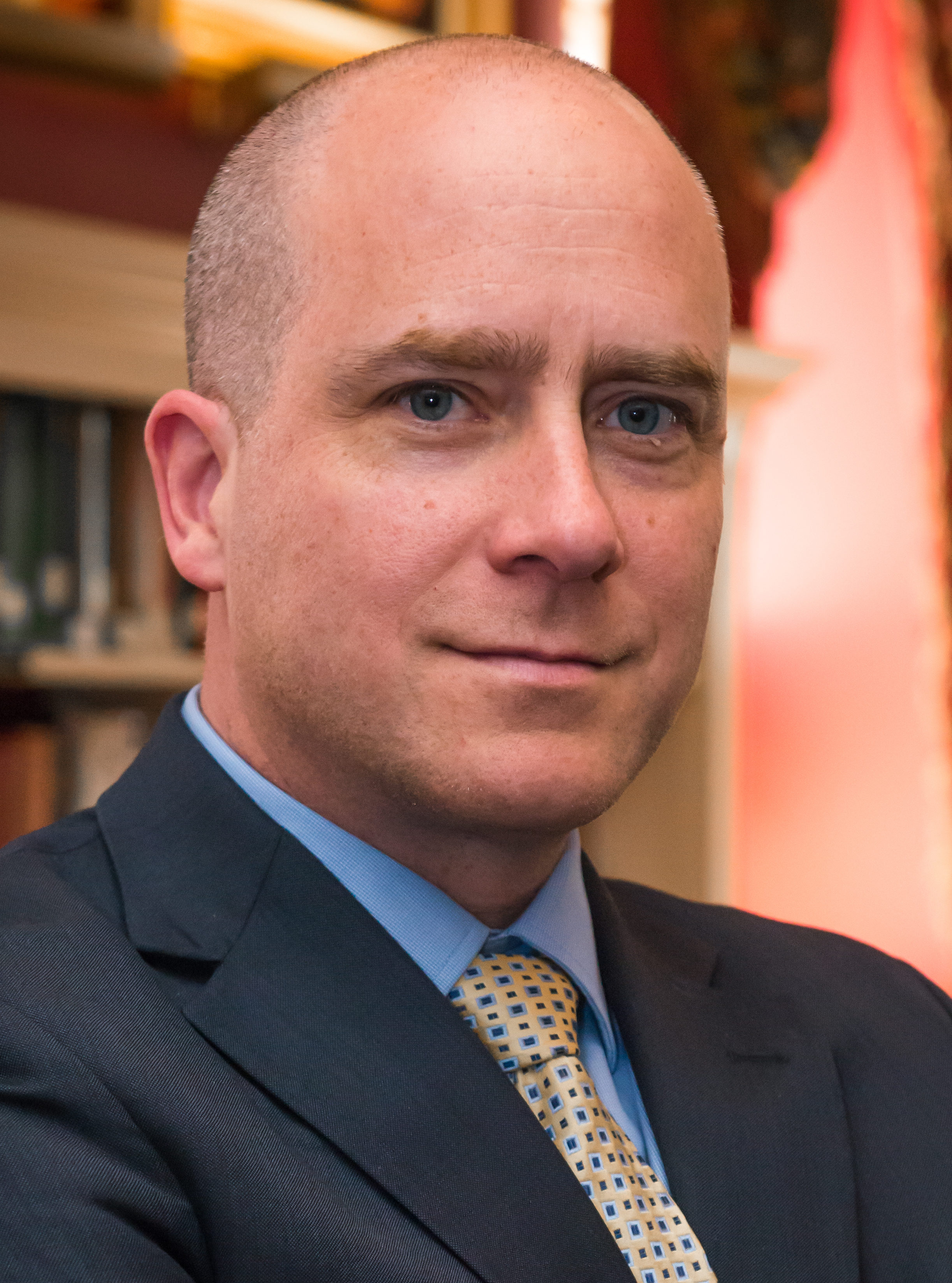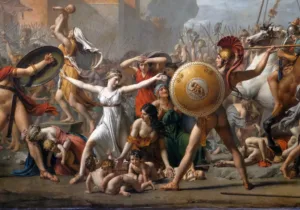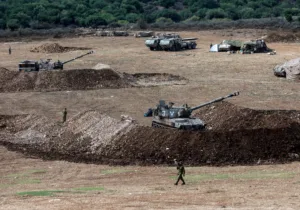On the first day of the Six-Day War, a massive preemptive attack by the Israeli Air Force against Egyptian airfields decimated Egypt’s ability to effectively continue its aggression against Israel. For anyone with eyes to see, the war was essentially over before it had really begun. Even so, Israel’s Arab enemies continued to prosecute the war. While focusing on Egypt, its most powerful adversary, Israel kept Syria at bay and attempted to encourage Jordan to stay out of the fight altogether. Through American diplomatic channels, Israeli officials appealed to King Hussein’s moderate character, promising not to attack Jordan if Jordan did not attack Israel. Had King Hussein agreed, in all likelihood the West Bank and East Jerusalem—including the Old City and Temple Mount—would still be a part of Jordan today.
Ignoring the Israeli overtures, however, King Hussein ordered Jordanian troops to attack across the Armistice Line, established after Israel’s War of Independence. In response, Israel launched a full-scale counteroffensive. After the Jordanian strongpoints on Ammunition Hill fell following ferocious fighting, the Old City lay open to Israeli forces. On the early morning of the third day, Motta Gur, the commander of Fifty-Fifth Paratrooper Brigade encamped outside Jerusalem’s ancient walls, received the order to “Go into the Old City immediately and capture it.” Within the hour, Gur relayed a now-iconic report over the radio: “The Temple Mount is in our hands.” Down below, aside the Kotel, or Western Wall, Rabbi Shlomo Goren, chief rabbi of the IDF, with Torah in hand, attempted to sound the shofar, an instrument long forbidden near the holy site. Overcome with emotion, Goren could not manage to wind the ram’s horn. Instead, another paratrooper, took the instrument from the rabbi and blew it for him. For the first time in several thousands of years, the shofar sounded over a Temple Mount and Western Wall that were again in sovereign Jewish hands.
In that same moment, the burdens following victory had begun.
This week, The Jerusalem district court recently upheld the ban on Jewish prayer on Temple Mount. This overruled an earlier ruling by a lower court that would have allowed Jews to do so, thereby overturning 55 years of status quo. On the one hand, nothing would seem to be more self-evident than that Jews should be allowed to pray on the historic location of the Jewish Temple. On the other hand, it ought to be equally clear that nothing in Israel is self-evident or straight-forward.
To be sure, the ban on Jewish prayer is as ironic as it is maddening. Immediately following Israel’s capture of the Old City, Israeli Defense Minister Moshe Dayan gave an important statement at the Kotel:
To our Arab neighbors, we extend…our hand in peace. And to our Christian and Muslim fellow citizens, we solemnly promise full religious freedom and rights. we did not come to Jerusalem for the sake of other people’s holy places, nor to interfere with believers of other faiths, but in order to safeguard its entirety, and to live here together with others, in unity.
An agreement followed that gave continued administrative oversight of Temple Mount to the Jordanian Waqf, or trusteeship. Agreements were made—though not by everyone—that only Muslims would pray on Temple Mount, al-Aqsa or Haram a-Sharif, and only Jews would pray at the Kotel. It is an imperfect attempt at unity.
In some ways, the refusal to recognize Jewish rights to pray on Temple Mount are bound up in the refusal, by some, to recognize Israel’s right to exist at all. As Rabbi Meir Soloveichik puts it in a recent essay in Commentary, “the question of what the Temple Mount embodies is bound up with the identity of the Jewish people, and the State of Israel.” Behind the denial of a Jewish right to the Mount, Soloveichik cautions, is an attempt to ensure that the Temple Mount remains devoid of Judaism, if not of Jews.
Further complicating things, Israelis are not, themselves, of one mind on the question. A recent poll of Israeli Jews suggests an even split, 50% of them believe Jews should have the right to pray on the Temple Mount. However, others believe the Temple Mount must not be approached at all. We see the grounds for this sentiment going all the way back to Maimonides, who insisted the Temple Mount remained the unique location of the holiness of the Shekhinah, an eternal holiness. That holiness must always be revered. For some, this is done by reverent pilgrimage to the site. For others, not so. The Chief Rabbis of Jerusalem, for example, have frequently warned Jews against ascending to the Temple Mount. The reason for caution includes the fact that the precise location of the ancient temple’s Holy of Holies has been lost to memory, and, therefore, a visitor might unwittingly enter the sacred area.
Others, of course, have something of a less transcendental apprehension. Security concerns make the bitterness of banning Jewish prayer a prudential judgment. It’s on this point that the grim realities of the Middle East broadly and Israel in particular become most clear and, in light of them, human responsibility so difficult. History—and the present day—reminds us that it is not always wise to do what we have a right to do. Some contexts are so volatile that an insistence on what is owed to us risks ushering in a hell on earth. Sometimes what is owed to us is worth risking the harms that might come from insisting on it. Other times it is not. This does not mean that we concede the principle one way or the other. If it is right for Jews to be allowed to pray on the Temple Mount if they chose to, then the motive for denying them that right—even for significant security concerns—cannot be justice. Giving deference to prudence over justice might be the right thing to do. But it will always mean that someone’s rights have been violated. And that is a source for sorrow. Even rage. But it is equally true that sometimes insisting on our rights will bring about events that will more grievously trample the rights of a good many others.
All that said, however, some see in the ongoing dispute over the Temple Mount an opportunity–however distant–for something extraordinary. Middle East expert Robert Nicholson, president of the Philos Project—and co-founder of Providence—pointed out that the tensions could be a means of bringing parties back to the table and relaunching the peace process. This opportunity rests in how much the Jews really want to regain full access to Temple Mount. While Nicholson suspects there isn’t a wide enough consensus right now, if, in the future, enough of Israeli society were serious about acquiring Jewish prayer space on the Mount that they were willing to make serious concessions to get it, then those on the Palestinian side who want peace could secure a major win for Palestinians in exchange for that prayer space. “The Oslo peace framework proceeded on the assumption that Jerusalem and its attendant issues had to be pushed to the end of the peace process,” Nicholson mused. “But perhaps everyone had it upside down.”
It’s an intriguing suggestion. As Nicholson concluded, “Jerusalem is the heart of the conflict, and the Temple Mount is the heart of Jerusalem.” Sooner or later, it will have to be dealt with. Until then, the status quo—as bitter, unjust, or imperfect as it is—remains the best path forward. But perhaps we wouldn’t be thought overly naïve if we hoped for the day when both sides are ready to do something big.







 Sponsor a student for Christianity & National Security 2024
Sponsor a student for Christianity & National Security 2024